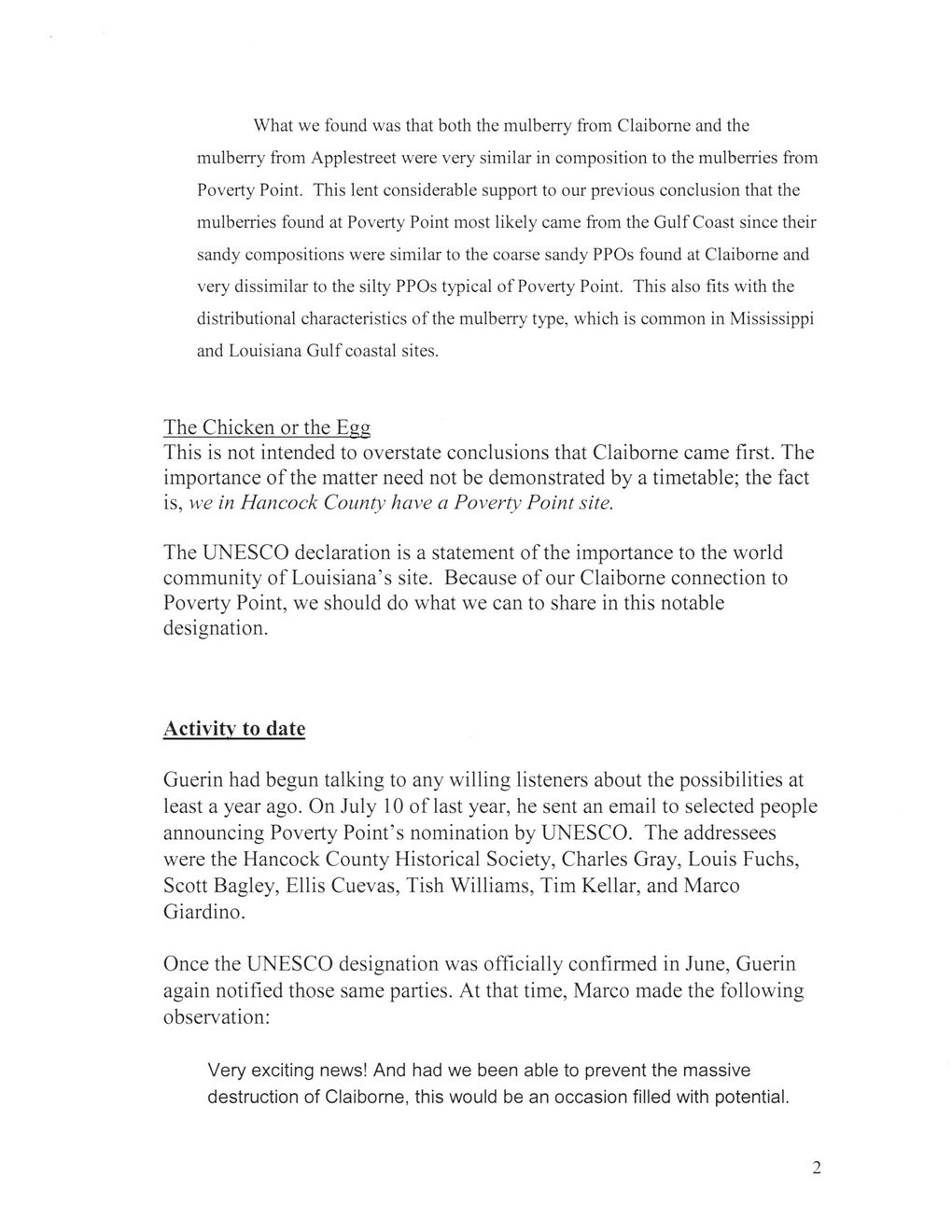This text was obtained via automated optical character recognition.
It has not been edited and may therefore contain several errors.
What we found was that both the mulberry from Claiborne and the mulberry from Applestreet were very similar in composition to the mulberries from Poverty Point. This lent considerable support to our previous conclusion that the mulberries found at Poverty Point most likely came from the Gulf Coast since their sandy compositions were similar to the coarse sandy PPOs found at Claiborne and very dissimilar to the silty PPOs typical of Poverty Point. This also fits with the distributional characteristics of the mulberry type, which is common in Mississippi and Louisiana Gulf coastal sites. The Chicken or the Egg This is not intended to overstate conclusions that Claiborne came first. The importance of the matter need not be demonstrated by a timetable; the fact is, we in Hancock County have a Poverty Point site. The UNESCO declaration is a statement of the importance to the world community of Louisiana’s site. Because of our Claiborne connection to Poverty Point, we should do what we can to share in this notable designation. Activity to date Guerin had begun talking to any willing listeners about the possibilities at least a year ago. On July 10 of last year, he sent an email to selected people announcing Poverty Point’s nomination by UNESCO. The addressees were the Hancock County Historical Society, Charles Gray, Louis Fuchs, Scott Bagley, Ellis Cuevas, Tish Williams, Tim Kellar, and Marco Giardino. Once the UNESCO designation was officially confirmed in June, Guerin again notified those same parties. At that time, Marco made the following observation: Very exciting news! And had we been able to prevent the massive destruction of Claiborne, this would be an occasion filled with potential. 2

Claiborne Historical Site Guerin-Giardino-(001)